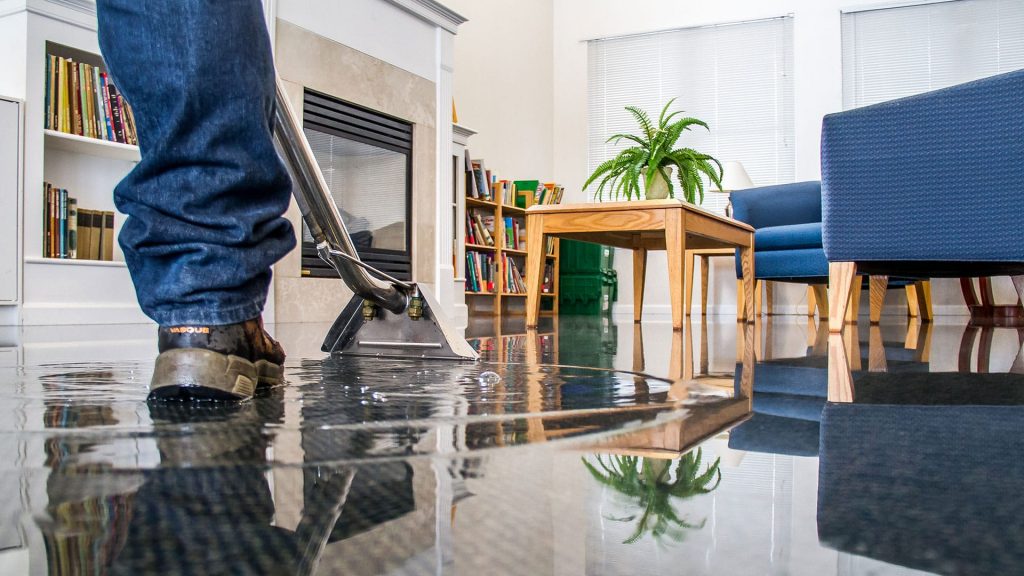Do's & Don'ts of Water Damage.
Do's & Don'ts of Water Damage.
Blog Article
We've unearthed the article involving Safety Tips To Prevent Fire And Water Damage below on the web and think it made perfect sense to talk about it with you on this page.

Water provides life, water invasion on components where it's not expected to be can result in damages. It can peel away surfaces as well as deteriorate the foundation if the water saturates right into your structure. Mold and mildew as well as mold additionally grow in a wet atmosphere, which can be dangerous for your health and wellness. Residences with water damage scent stuffy and also old.
Water can come from lots of sources such as typhoons, floods, burst pipes, leaks, and also drain problems. In case you experience water damage, it would be great to understand some safety and security precautions. Right here are a few guidelines on exactly how to handle water damages.
Do Prioritize Residence Insurance Policy Protection
Water damages from flood because of heavy winds is seasonal. You can additionally experience a sudden flood when a faulty pipeline suddenly breaks right into your house. It would be best to have home insurance coverage that covers both disasters such as natural tragedies, and emergencies like broken plumbing.
Do Not Fail To Remember to Switch Off Utilities
In case of a disaster, especially if you live in a flood-prone area, it would be suggested to shut off the primary electric circuit. This cuts off power to your whole house, stopping electric shocks when water comes in as it is a conductor. Moreover, don't fail to remember to shut off the main water line valve. Furnishings will relocate about as well as trigger damage when floodwaters are high. Having the major shutoff shut down protects against further damages.
Do Remain Proactive and also Heed Weather Informs
Tornado floods can be extremely unpredictable. Stay ready as well as aggressive if there is a history of flooding in your neighborhood. Listen to emptying warnings if you live near a lake, creek, or river . Take out prized possessions from the ground floor as well as cellar, then placed them on the greatest possible degree. Doing so decreases potential property damages.
Do Not Ignore the Roof
You can prevent rainfall damages if there are no openings as well as leakages in your roof. This will certainly prevent water from streaming down your walls and saturating your ceiling.
Do Focus On Tiny Leakages
A ruptured pipe does not occur over night. Typically, there are warnings that indicate you have deteriorated pipelines in your home. For instance, you might see bubbling paint, peeling wallpaper, water touches, water stains, or trickling noises behind the walls. At some point, this pipe will rupture. Preferably, you should not await points to intensify. Have your plumbing fixed before it causes substantial damages.
Don't Panic in Case of a Burst Pipeline
When it comes to water damage, timing is key. Hence, if a pipe ruptureds in your residence, instantly closed off your major water valve to reduce off the resource. Call a credible water damage reconstruction specialist for support.
Water offers life, water breach on parts where it's not intended to be can result in damages. Houses with water damage odor musty as well as old.
Water damage from flood dues to heavy winds is seasonal. You may see bubbling paint, peeling wallpaper, water touches, water stains, or leaking sounds behind the wall surfaces. When it comes to water damage, timing is essential.
Some Do's & Don't When Dealing with a Water Damage
DO:
Make sure the water source has been eliminated. Contact a plumber if needed. Turn off circuit breakers supplying electricity to wet areas and unplug any electronics that are on wet carpet or surfaces Remove small furniture items Remove as much excess water as possible by mopping or blotting; Use WHITE towels to blot wet carpeting Wipe water from wooden furniture after removing anything on it Remove and prop up wet upholstery cushions for even drying (check for any bleeding) Pin up curtains or furniture skirts if needed Place aluminum foil, saucers or wood blocks between furniture legs and wet carpet Turn on air conditioning for maximum drying in winter and open windows in the summer Open any drawers and cabinets affected for complete drying but do not force them open Remove any valuable art objects or paintings to a safe, dry place Open any suitcases or luggage that may have been affected to dry, preferably in sunlight Hang any fur or leather goods to dry at room temperature Punch small holes in sagging ceilings to relieve trapped water (don't forget to place pans beneath!); however, if the ceiling is sagging extremely low, stay out of the room and we'll take care of it DO NOT:
Leave wet fabrics in place; dry them as soon as possible Leave books, magazines or any other colored items on wet carpets or floor Use your household vacuum to remove water Use TV's or other electronics/appliances while standing on wet carpets or floors; especially not on wet concrete floors Turn on ceiling fixtures if the ceiling is wet Turn your heat up, unless instructed otherwise

I came across that entry about How To Prevent Fire And Water From Ruining Your Holiday Season when looking around the search engines. Those who liked our page if you please remember to pass it around. Thank you so much for your time invested reading it.
Report this page